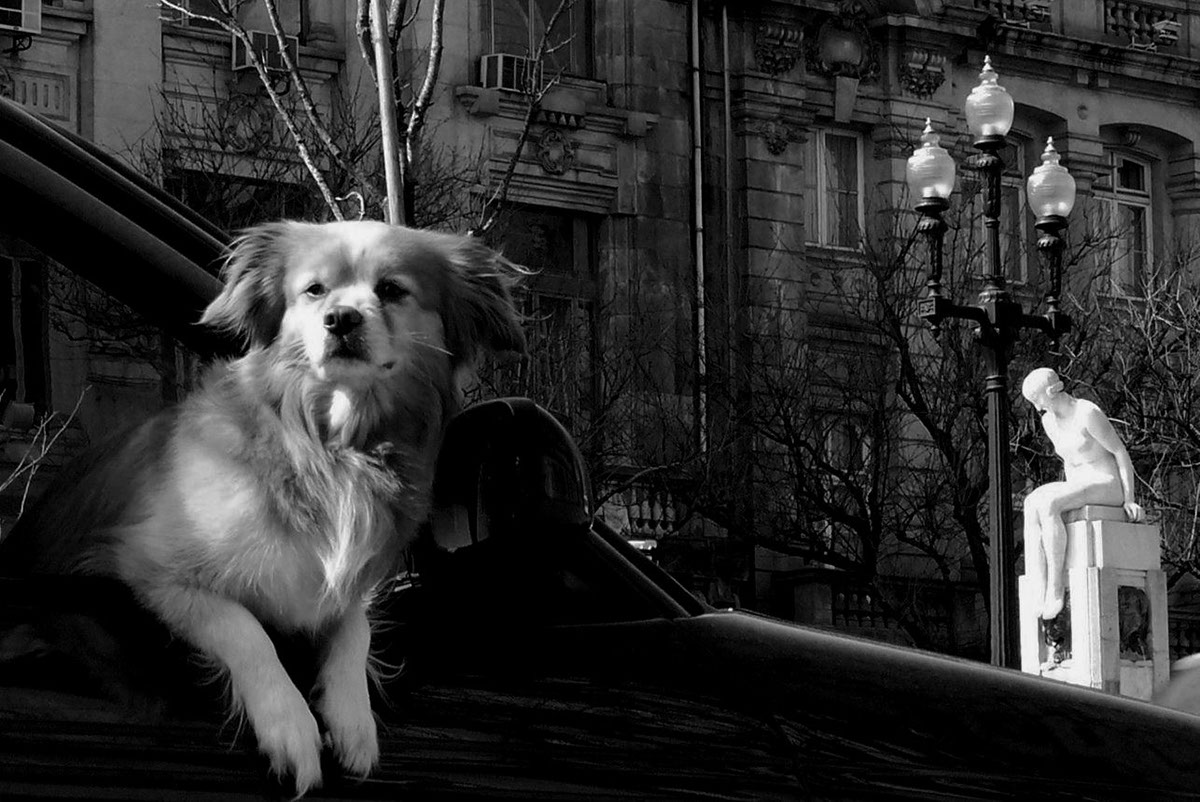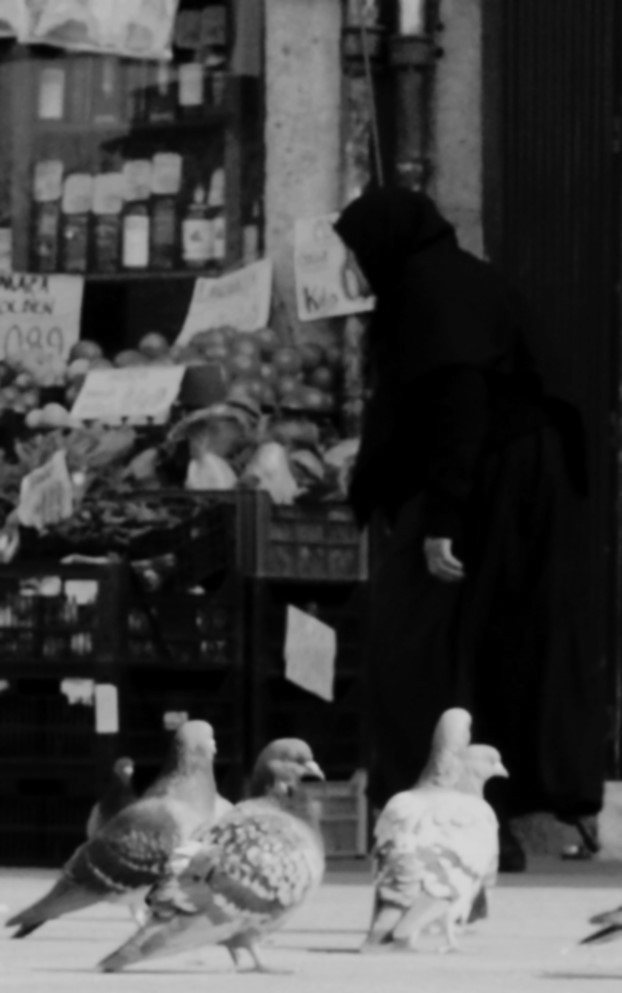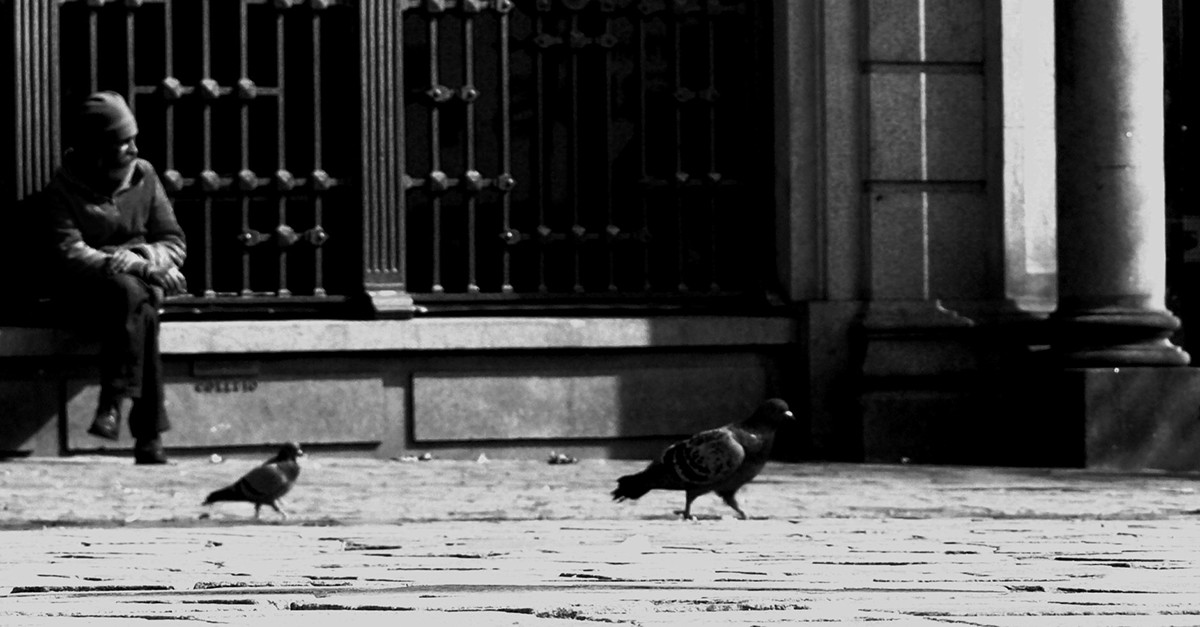









Ruas Cinzas
Em 2011, em Portugal, durante intercâmbio acadêmico na Universidade do Porto, lancei meu olhar de transeunte estrangeiro sobre as ruas portuenses e produzi três séries fotográficas: Ruas Cinzas, Ruas Saturadas e Voos Verdes. Ruas Cinzas obteve o 2° lugar no 10° Concurso de Fotografia AEFLUP 2011 – Fotografar a Rua e integrou exposição coletiva na Faculdade de Letras da Universidade do Porto entre março e abril daquele ano. Esta série também integra, parcialmente, a mostra Panorama, que inclui obras de seis séries fotográficas de minha autoria. Esteve em exposição no espaço cultural Obere Mühle (Dübendorf, Suíça) em agosto e setembro de 2016.
Cheguei ao Porto em fevereiro de 2011, cinco anos após a morte de Gisberta. Só conheci sua história em 2013, através da música Balada de Gisberta, de Pedro Abrunhosa, interpretada por Maria Bethânia. Neste momento mudei para Ocaso de Gisberta o nome da fotografia antes intitulada Rua de Santa Catarina, rua onde Gisberta trabalhou. Posteriormente a intitulei Rua de Santa Gisberta, por achar mais apropriado.
A artista Gisberta Sauce Junior carregava em seu corpo o peso da discriminação por ser moradora de rua, imigrante, profissional do sexo, dependente química, soropositiva e, sobretudo, por ser transgênero. Em fevereiro de 2006, foi torturada durante três dias e depois atirada em um poço por um grupo de 14 meninos, o que foi descrito pela justiça como “uma brincadeira de mau-gosto que correu mal”. Nenhum deles foi julgado por homicídio, pois foi constatado que a causa da morte foi afogamento; não foi a transfobia que matou Gisberta, foi a água. O caso foi amplamente divulgado na mídia portuguesa, que se referiu a Gisberta no masculino e espantou-se com a idade dos agressores, não com o crime.
Impossível não relembrar a vida de meu grande amigo Lucas Fortuna, assassinado em 2012, no Brasil, em circunstâncias semelhantes: torturado e jogado na água, e posteriormente constatada como causa da morte o afogamento. A justiça determinou que não foi um crime homofóbico; não foi a homofobia que matou Lucas, mas seu “comportamento”.
Essa lógica torpe me fez constatar que nem o ódio, a violência e a superioridade numérica foram suficientes para, de fato, matá-las. E concluir que no final, querida, quem vai ganhar é a bicha. Certeza!
“No fundo, é tão pequena,
A queda.
E o amor é tão longe,
O amor é tão longe…”
Balada de Gisberta, de Pedro Abrunhosa. in: Luz, 2007.
Gray Streets
In 2011, in Portugal, while in an academic exchange programme with the University of Porto, through the eyes of a foreign passer-by I produced three photographic series: Gray Streets, Saturated Streets, and Green Flights. Gray Streets won second place on the Student Association of the Faculty of Letters of the University of Porto (AEFLUP) Photographic Contest 2011 – Photographing the Street took on the group exhibition in the Faculty of Letters from the University of Porto between March and April of that year.
I arrived in Porto in February 2011, five years after Gisberta had passed away. I only learnt of her story in 2013 through the song called A Ballad of Gisberta, by Pedro Abrunhosa, performed by Maria Bethânia. The very moment I learnt about it I renamed the photo The Downfall of Gisberta, which I had previously called Santa Catarina Street, the street where Gisberta used to work on. Afterwards I started naming it Saint Gisberta Street because I found it more appropriate.
Artist Gisberta Sauce Junior bore in her body the burden of discrimination for being homeless, immigrant, sex worker, drug addict, HIV positive, and above all, for being transgender. In February 2006, she was tortured by a group of 14 boys during three days and then dumped in a waterhole. The episode was described by the judicial system as “a mischief which went wrong”. None of the boys was tried for murder because it was found that the death cause was drowning; transgender phobia did not murder Gisberta, it was water. The case was largely shown in the Portuguese media, which referred to Gisberta as a male being and was amazed at the age of the perpetrators, not at the crime itself.
I cannot help remembering the case of my good friend Lucas Fortuna, murdered in 2012 in Brazil under similar circumstances: tortured and dumped in water, and afterwards the death cause was found to be drowning. The judicial system stablished that it was not a hate crime led by homophobia; it was not homophobia that murdered Lucas, but his “behaviour” instead.
This dreadful logic made me realize that not even hatred, violence and the outnumbered superiority were, in fact, enough to kill them. And to draw the conclusion that in the end, darling, it is the queer who is going to be victorious. For sure!
“Deep inside, she is so tiny,
The fall.
And love is so far away,
Love is so far away…”
The fall.
And love is so far away,
Love is so far away…”
A Ballad of Gilberta, by Pedro Abrunhosa. in: Luz, 2007.

Rua de Santa Gisberta

duas musas

tecido

Casa Oriental

(sem título)

(sem título)

musa da montra

(sem título)

(sem título)

rua cinza

